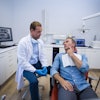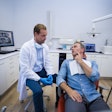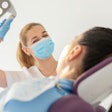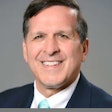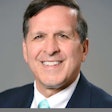
"I know I need to see you, but I am really worried about ..."
How many times have we heard this from occasional patients whom we "run into" in a meeting, a social situation, or the grocery store? I do not believe this is something new to this economy but rather a problem of the ages for dentistry. Calming the fearful patient is one of my favorite things about dentistry.
Why do I call these patients "occasional?" They may have joined our practice, after several years of dental absence, to "get my teeth cleaned." After a few preventive visits, they may need more in the restorative realm of the practice, be it a few composites or something more substantial.
 Sheri B. Doniger, DDS.
Sheri B. Doniger, DDS.It is not as if we are "making up" treatment: Many of these patients have taken quite a long hiatus from dental care, and they do need some random restorative treatments. Then, they disappear. They are unavailable for preventive appointments and definitely did not schedule restorative. The interesting thing is that they do not schedule with another dentist because they actually enjoy coming to the practice. But they are fearful of the conversation.
How do we get these occasional patients to return and become active participants in our practice? It is all about communication. Unfortunately, when patients approach us in public, it is very difficult to have a cogent conversation about their treatment, let alone the particular aspects of which tooth needs what, without being in the privacy of our offices.
When I was approached by one of my occasionals, we were at a public meeting. There was no place to have a private discussion. Although she touted me as the best dentist, her regular appearance in my office was not as stellar.
Patients are fearful of the dentist for several reasons. The top two are fear of the cost of treatment and fear of the unknown. When we actually consider what we are doing, each treatment is a minor "surgery" on every patient. Be it removing calculus subgingivally or prepping a tooth with a bur, we are doing a procedure on the patient while he or she is awake, listening, and alert.
Our patients may be listening to headphones, or watching something on television, but the majority of them are merely staring up at the ceiling, waiting for whatever we are doing to be finished. It is this fear of the unknown, the inability to "see" or know what we are doing, that rattles many of our patients.
“Calming the fearful patient is one of my favorite things about dentistry.”
With the advent of intraoral cameras, our patients are able to see before photos of many potential restorative dentistry needs. But who takes the time to discuss the findings with the patient? The dental hygienist usually spends the most time with the patient, discussing photos captured during a preventive appointment. The dental assistant is also able to have the photo available in the treatment room as the patient is being seated.
We, too, are able to discuss treatment needs with patients, but it should be done before the neck napkin goes on. Patients tend to listen better if they are in the chair without the dental napkin barrier between us. Once the napkin goes on, in their mind, the treatment has begun. No negotiation. No discussion. So, even if we are going to discuss the procedure particulars, they are basically shutting us out. Especially for a fearful patient, waiting a few minutes to apply the dental napkin is a great technique to have a more open conversation. It doesn't take much time, but it is a great practice builder.
This particular patient was nervous about potential gingival recession issues. Yes, I completely understand, as I had to undergo periodontal grafting procedures many, many years ago. Even though I knew the entire procedure because I assisted the periodontist for several years, there was still a tiny bit of trepidation about the postoperative period, especially since palatal tissue was to be removed. We spoke about scheduling an appointment to reassess the area and get back into a routine of prevention to avoid making the situation worse. She promised to schedule. Only time will tell.
Sheri B. Doniger, DDS, practices clinical dentistry in Lincolnwood, IL. She is currently vice president and president-elect of the American Association of Women Dentists and editor of the American Association of Women Dentists "Chronicle" newsletter. She has served as an educator in several dental and dental hygiene programs, has been a consultant for a major dental benefits company, and has written for several dental publications. You can reach her at [email protected].
The comments and observations expressed herein do not necessarily reflect the opinions of DrBicuspid.com, nor should they be construed as an endorsement or admonishment of any particular idea, vendor, or organization.

